Arm is in good shape. It has a couple of more thousand engineers since SoftBank acquired it for $31 billion in September 2016, bringing its total workforce to more than 6,000.
The Cambridge, England-based company designs processors that are energy efficient, and the world’s $450 billion semiconductor market has moved in this direction. SoftBank estimates that we’ll have a trillion connected devices by 2025, thanks to the internet of things, which is making every object smart and connected.
Arm is acting to ensure its chip designs are used in those things, and it is also tightening its relationships with the world’s contract chip manufacturers to ensure that the $10 billion factories where Arm-based processors are manufactured have both the capability and capacity to provide what Arm’s customers need in the future.
And Arm’s partners are also launching attacks into Intel’s territory, via initiatives such as Arm-based servers and Windows machines. Meanwhile, SoftBank wants to use Arm as the hive mind that will lead to the Singularity, or the moment when the collective intelligence of AI will supersede the intelligence of mankind. I talked with Simon Segars, CEO of Arm, about all of these things in an interview at CES 2019, the big tech trade show in Las Vegas this week.
June 5th: The AI Audit in NYC
Join us next week in NYC to engage with top executive leaders, delving into strategies for auditing AI models to ensure fairness, optimal performance, and ethical compliance across diverse organizations. Secure your attendance for this exclusive invite-only event.
Here’s an edited transcript of our interview.

Above: Simon Segars, CEO of Arm, at CES 2019.
VentureBeat: This idea of the internet of everything, of tech going into ordinary products and transforming them, seems like a big theme for you this year.
Simon Segars: Yeah. You might have a relatively, by today’s standards, low-capability process in a chip that costs five bucks from one of our partners, but the processing capability is all you need with the right sensors on it.
VentureBeat: Do you even hear about everything your products go into anymore? Have you ever counted how many designs they end up in?
Segars: Oh, no. For something like that, they may have bought a chip through a distributor, so even our licensee wouldn’t know what it’s going into. For all I know, ST or someone like that who makes thousands of standard products sold through a distribution channel — the distributor might have more to do with the design than anybody else in the whole supply chain. We did do some estimation of the number of different SOCs being built on Arm. I can’t remember what it was, but it was a large number.
VentureBeat: What’s interesting for Arm at CES this year?
Segars: Things like that are always going to interest me. It’s one of those — take these really inexpensive chips and do something creative with them. As you said, ordinary devices being enhanced through relatively low-cost technology. I always like to see that kind of experimentation that people do.
The big themes this year seem to be around 5G and — this is a consumer show, so you get a lot of questions around what 5G is going to do for people. But for me 5G is quite foundational to a lot of what will be delivered through 2019 and beyond. It’s quite a pivotal moment for us.
Lots of things collecting data and driving AI. It seems like there’s yet another battle about who’s got the best AI right now. The home devices, the digital assistants, the ongoing evolution of those is interesting. And then just the breadth of it all.
VentureBeat: I just walked through the wearables section. There’s a ton of no-name Asian companies in there doing wearables now. It shows how low the costs have gotten, and how widespread the technology is going. It’s not just the Fitbits, the cool western startups. It’s people you never heard of.
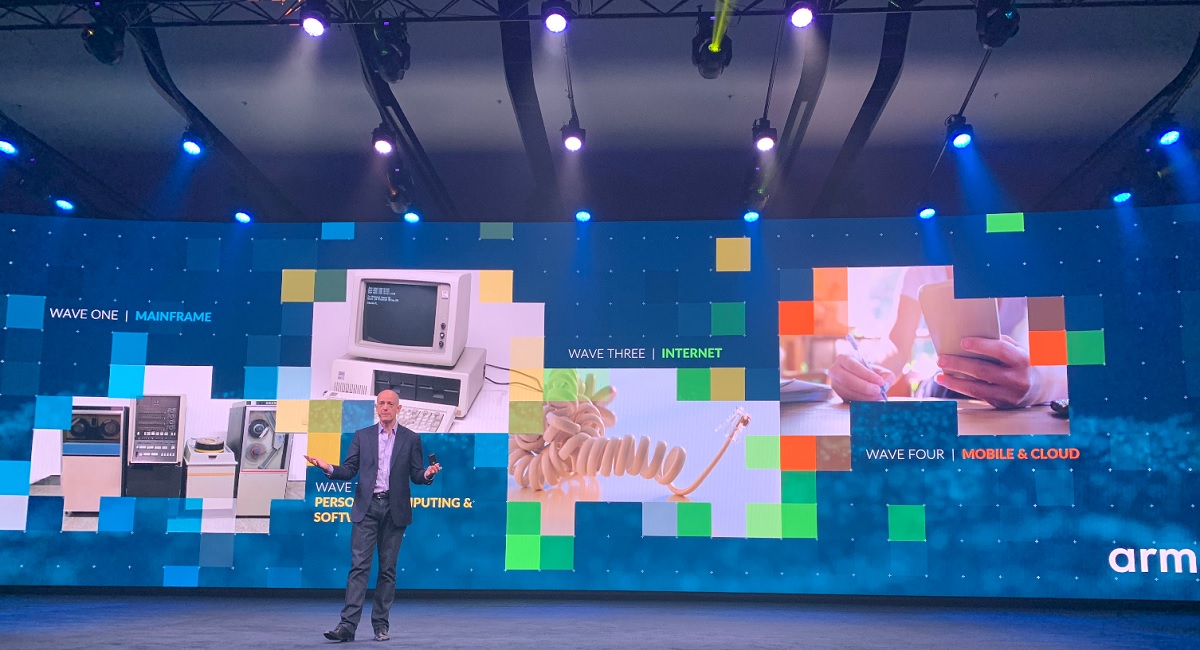
Above: Simon Segars, CEO of Arm, at Arm TechCon 2018.
Segars: Again, by today’s standards it seems old hat, but you can get a low-cost microcontroller with the right sensors in it and it’s just a coding problem to create a product like that. Automotive is the other big area that’s been growing and growing at CES. I heard they had to spill automotive into another exhibition area here, because the normal bit where it’s at has filled up. Unfortunately I’ve had no time to walk around the floor.
VentureBeat: As far as the edges of opportunity for you — you have your strongholds, but spreading out from there into other areas, what do you think you’re hopeful about?
Segars: Mobile has been a big driver of the whole tech industry for years. We’ve been closely associated with that. It’s driven our road map. For a very long time now, the technology we’ve developed for mobile has found its way into other places. I always like looking at the TVs here at CES, looking at how much bigger they’re getting, how much more sophisticated the user experience is getting with TVs. That’s driven by the kind of chips that were built for mobile devices. TVs are like smartphones with really big screens these days. There’s a direct bleed from one class of technology into another.
Generally, that growth of mobile has driven higher performance, higher integration, sensors, power efficiency. That’s now going into all these other things. Procter & Gamble’s makeup device is a beneficiary of all the R&D that’s gone into mobile. You see it spilling into other things. Modem technology is spilling into everything. 5G will provide the backbone that it can connect to. Automotive, even, it’s connectivity. It’s using the benefits of all that evolution in mobile to create sophisticated user interfaces within the car, and it will drive the power of the computing to do autonomous over time.
Mobile has been such a big driver, and when I see people talk about how mobile’s growth rate has flattened out, drawing a doomsday scenario around that — I think that’s the wrong way of looking at it. So much has come from it, and it’s going everywhere else. Even in laptops, we’re now seeing ultra-low power, ultra-long battery life laptops running Windows 10 with built-in modems providing instant connectivity. Again, it’s taking a lot of technology advancements from mobile and putting it in a different device.
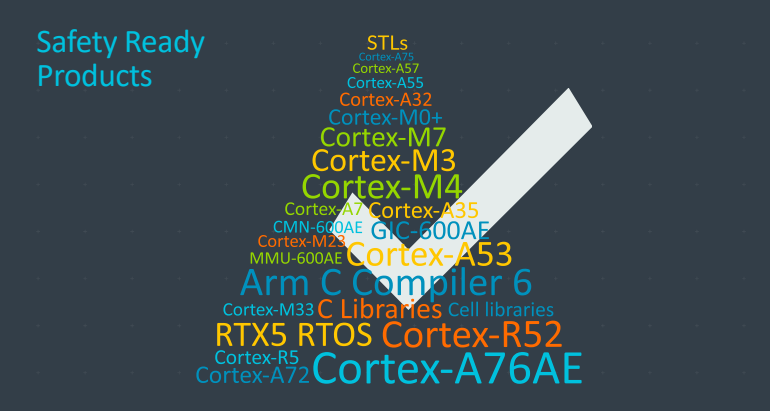
Above: Arm Safety Ready processors.
VentureBeat: In that market, do you measure success by what share you’re taking?
Segars: Yeah. In the Windows 10 devices it’s early days, but there’s a handful of OEMs with products out there. From Lenovo, I’ve been using the Yoga C630, which is a great device. HP has a two-in-one. They’re all sort of two-in-ones, and they’re really good. The battery lasts forever. You can just open the lid and you’re connected. It’s great.
VentureBeat: A lot of the big guys have a Chromebook option, and now they have an Arm-based Windows 10 as well.
Segars: I think it’s similar and different. The Chromebook was a different usage paradigm. I think the Windows 10 with the always-on connectivity is a different use case, but it’s an extension of a current use case. People are used to opening the lid and wondering how to get connected. Do I pair it with my phone? Do I find a Wi-Fi network? Do I trust this Wi-Fi network? This just takes all that friction out. It’s changing the way you can view that kind of device.
VentureBeat: I saw Kohler’s smart toilet as well.
Segars: What was smart about it?
VentureBeat: It could sense you coming and lift its lid. It’s self-cleaning. It had lights as well, that you could program using their app.
Segars: The internet of toilets. You don’t need a lot of electronics to do that. But I wish I’d seen that when I was remodeling my house. But it’s not doing medical analysis, anything like that?
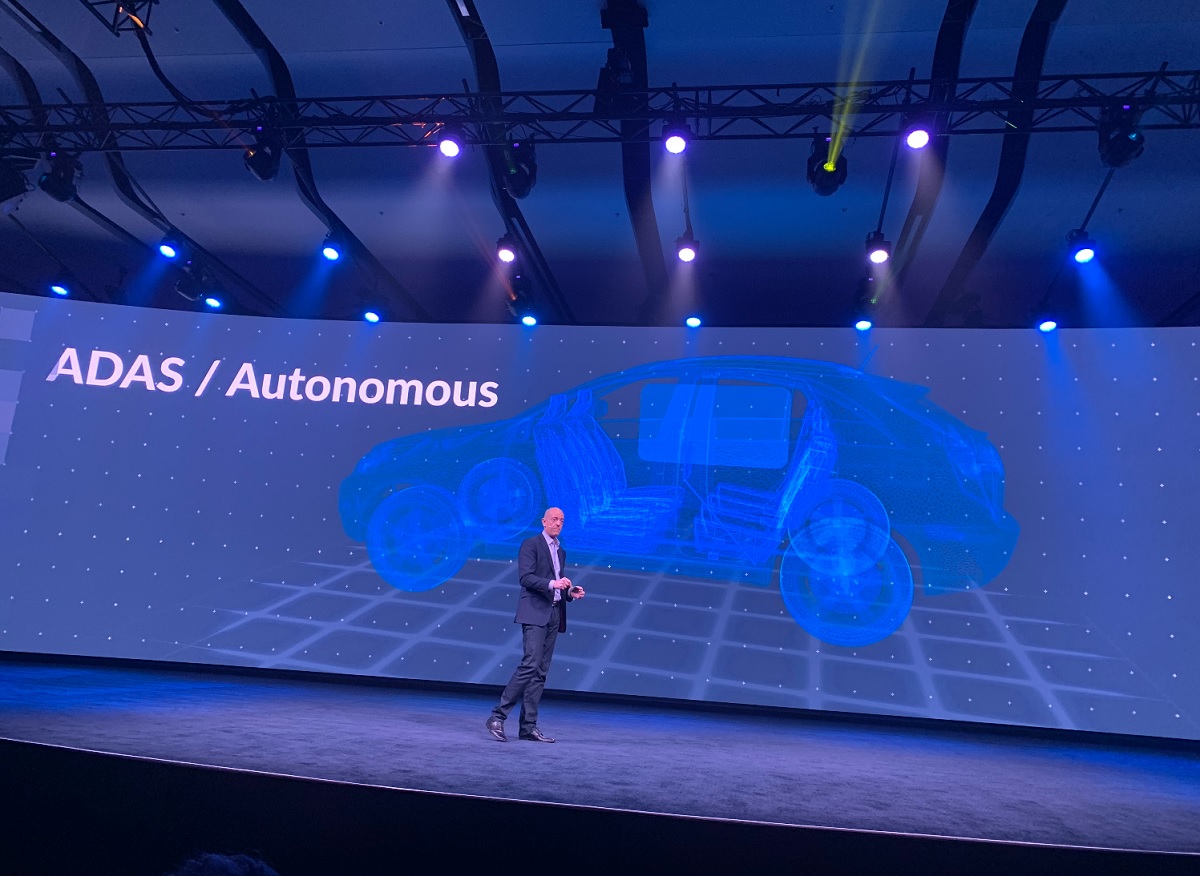
Above: Arm CEO Simon Segars at Arm TechCon 2018.
VentureBeat: It could one day? [laughs] There are other edges to your market, like the Arm servers. What do you think of the progress there? I saw Renee James’s company got to market. That’s a milestone.
Segars: Yeah, what Renee is doing with Ampere is great. With AWS deploying the Annapurna Labs device, those AI devices, a 41 percent cost savings is really significant. And then just this Monday, Huawei just launched their server device, which again, you look at the stats on the performance they’re achieving, it’s right up there. Quite a lot going on in the Arm server space.
VentureBeat: How much importance do you put on that particular market, strategically?
Segars: It’s important for us. When we think about how computing is evolving, there’s a plethora of different end devices, whether it’s the Procter & Gamble thing or handsets. That’s just growing like wildfire. The network and the data center end of that is an important class of computing to us. We’ve been investing in that road map. At TechCon, where we last saw each other, we launched Neoverse, which is a lineup specifically for that. We see that as a big growing market. We want to participate in it.
I can see a convergence of the devices we might deploy in a data center based on Arm with the devices we might deploy in a fully autonomous vehicle. Again, it’s foundational technology that we’ll see in other places.
VentureBeat: You grew by thousands of people since the acquisition. Where are they all going?
Segars: It really is across the board. We have more people working on our core road map, delivering processes and variants of our processes for different markets. Just the other day we launched another part specifically designed for automotive, the A65AE. It’s a processor designed with safety features and split-lock features for automotive. That’s come from our core engineering growing and being able to take a core processor and create variants for mobile, variants for automotive, and variants for enterprise, with the right features and performance levels.
A lot of our investment has gone into that capability, along with some of the specific IP and software that we’ll need for different markets, whether it’s ISPs — we just launched a couple of new ISPs — or security features for IOT devices, or software. We’re doing a lot of work around software and services for managing and securing IOT devices. This is where our engineering growth is going.

Above: Arm’s roadmap
VentureBeat: The usual way I had of describing the competition with Intel was, Intel comes from the top on down and you guys go from the bottom on up. Do you have any observation about who wins in that kind of competition?
Segars: Well, I don’t know who wins, but we look at that and see a lot of opportunity to put highly energy-efficient processing into silicon devices that our partners are going to make. Building around standard architecture, you can get lots of software reuse. We’re integrating all the specialist know-how our partners have. The applications for that seem to grow and grow.
Every year CES seems more diverse than the year before. Some years you get a big step change and other years it’s more incremental, but every year I come here I see different ways in which people are putting that together and just integrating more and more. I don’t see that trend slowing down any time soon.
VentureBeat: Trying to solve the hardest problems with this approach — is it more trying to figure out ways to make small things work together? Like bees in a hive? Or is it some other approach?
Segars: Our approach has been that high performance, energy-efficient processors are foundational to many things. We have a suite of other IP we can put around that for where those computing elements need to interact. We do a lot of work on the integration of those, a CPU and a GPU and a neural network accelerator, things like that. We’ll think about how the data flows within that. Security elements, interconnected elements, I/O elements. That creates a fabric that our licensees can then take and mix and match and build around with standardized interfaces.
We’re trying to provide the things which are very commonly found in a lot of devices. I don’t really differentiate the end product. That enables our partners to spend their R&D on the things that will create the greatest differentiation. But really what we’re trying to is enable that and then get out of the way of it. The hundreds of companies we work with, the people there will come up with ideas we can’t possibly think of.
VentureBeat: The initiative you were starting to take to drive the manufacturing technology forward was interesting. You were commenting that, once upon a time, Intel was supposed to be the one to do the heavy lifting for that, and now the world is different. Somebody has to shoulder some of this responsibility, going from 10nm to 7nm or whatever. Is that what some of your thinking is, trying to make that happen?
Segars: When was it, 2004, when we acquired Artisan Components? That got us into the physical IP business. I used to run that business. The reason we made that acquisition was because we knew that going from the RTO of a microprocessor that you shipped to somebody to actually implementing it on silicon — as the processor technology got more complex, that was going to be really hard. We wanted to sit in the middle of that. We wanted to develop relationships with the foundries. Over the long term we knew that would become a really difficult problem.
Sure enough, it has. We’re in a position today where we’re partnering with the likes of TSMC and Samsung. I was just at lunch with E.S. Chung, who runs Samsung’s foundry business, talking about what’s coming down the pipe in terms of new transistor structures. How are we going to optimize our designs around those? How do we rebalance the pipeline when the performance ratios between interconnect and memory and transistors change as you go through these transitions? How are we going to run early devices together to get the learning of that?
We’re doing that with Samsung and we’re doing that with TSMC to kind of trailblaze, so that when our licensees are then looking to build a chip, we’ve proven the route. We’ve worked with the EDA companies, Cadence and Synopsys in particular, on the flow issues and trying to deal with the friction that slows down a designer going from design to manufactured chip. Those relationships, as the industry has shaken down and you see both Samsung and TSMC on the leading edge — our relationships with them are deep. Samsung is one of our first licensees ever. It’s a multi-decade relationship in that case. It’s very important.
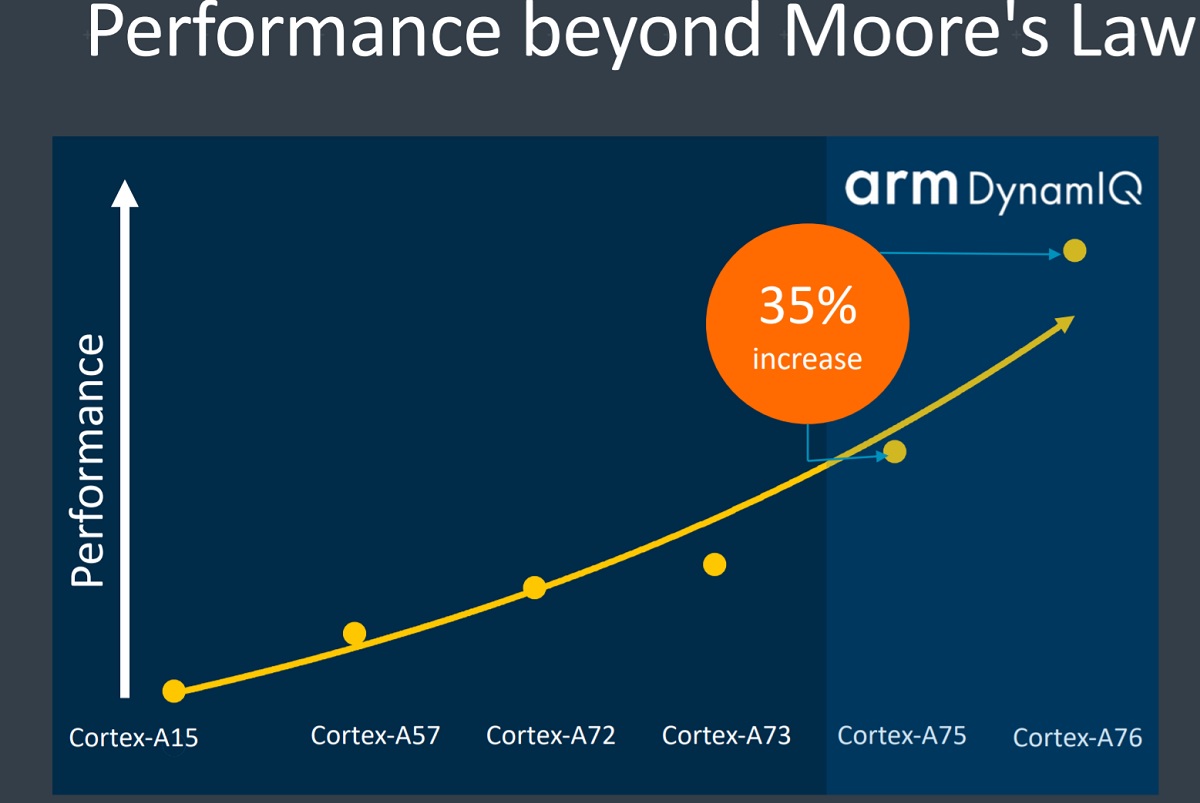
Above: Arm is making its chips faster for Windows laptops.
VentureBeat: Did it seem like something that was maybe more the responsibility of an integrated device manufacturer?
Segars: Oh, yes, once upon a time. That shift really started in the ‘90s. The first Arm processors we built were shipped as GDS2 hard macros. They were optimized for each licensee’s process. I can remember — I think Cirrus Logic was first fabless company we worked with. I remember sitting in the room and thinking, “What do you mean, they haven’t got a fab?” It seemed like a crazy idea. But that really was the start of the foundry model as pioneered by TSMC. It’s been one of the things that’s enabled such acceleration of semiconductor technology.
VentureBeat: It always seemed like you guys were designing and the foundries were manufacturing. It was a nice way to divide up the industry. But that doesn’t seem so true anymore. You need this collaboration.
Segars: Yeah, you do. If you go back 10 years and look at the way people would describe how the industry is dis-aggregated — it went from IBM doing everything, from product design all the way down to transistors and maybe even equipment, to the likes of ASML producing equipment, and you have a TSMC that does wafer manufacturing. You’ve got Arm and the EDA companies that provide IP and design flows. And then you have a designer. That looks like really neat, partitioned areas of expertise, and you focus that expertise to get the best thing.
As it’s all become more complex, the interfaces matter. That’s where you get the partnership approach, the collaboration approach that us and the foundries and the design companies and the EDA companies all focus on. It delivers what I like to think is the best of both worlds. We’re focusing on the expertise of processing elements in our case, EDA in the case of the EDA companies, but we’re partnering to make sure that when it all comes together, you’re not losing something in the gaps. You’re really squeezing those gaps.
VentureBeat: Qualcomm, once upon a time, didn’t necessarily care so much about manufacturing. Now they have to make these investments that drive it forward.
Segars: The big fabless guys, while they are fabless, they have people that go and sit in the foundries. They care very much about yield, about power. They need to be on the bleeding edge of the process. It’s not just, “I’ve finished my design, please manufacture it and I’ll sit around for three months until I get wafer back.” It’s a much more interactive process.

Above: Arm points out why internet of things devices have to be secure.
VentureBeat: I always thought Masayoshi Son’s talk about the singularity was interesting. How does that affect your thinking, being part of a larger plan like that?
Segars: It’s a different way of expressing what we were doing. Like I said earlier, we see this growing set of applications and growing volume of embedded computing. Devices are getting smarter and smarter. At some point, where does the sum of that intelligence — what does that deliver? With the growth of AI, which has been very rapid when you think about it, and the advent of deep learning and the step change that caused in the deployment of AI, very quickly we’ve gone from discrete computing devices to connected computing devices to a world of data and that data training algorithms. It’s been a rapid evolution of what we were doing.
Masa has a very interesting way of looking at the world, and a lot of money to deploy to make that vision come true. It’s fascinating being part of that.
VentureBeat: I almost thought he would have kicked the tires on something like Nvidia, or whatever the supercomputing companies are now, rather than go to Arm, which didn’t necessarily seem to have this on the road map.
Segars: Part of Masa’s interest in Arm was and is the fact that the broad usage of our technology is really unprecedented. In an event like this, I can spend one meeting talking to somebody building an autonomous car and the next one talking to somebody building handsets, and the next talking to somebody building networks. We’re in a unique position in terms of understanding the future-looking road maps of all these different areas. That does give us some insight into the future.
VentureBeat: If you’re also thinking that maybe a hive mind is the way to get to the singularity, it makes sense.
Segars: Absolutely, yeah.
VentureBeat: It leads to interesting thoughts about — what are the other pieces? If you’re just a piece of something, what other pieces have to be there? Amazon buys Whole Foods, and there’s something strategic there, but I’m not sure exactly what it is. Some kind of 20-year plan to kill retail, acquire it, and do something else with it.
Segars: I don’t know if Amazon’s killed retail. They’ve changed it, and they now know an awful lot about people’s retail habits. You can’t quite buy anything edible via Amazon, but you now can through Whole Foods. It’s a source of some other data.
SoftBank has changed quite a lot over the last couple of years since we were acquired. It’s very much about, what can the group learn about what’s going on in the world? How is that used to then invest in companies that are leveraging these long-term trends? That’s more, really, the philosophy that’s driving the growth of SoftBank at the moment.
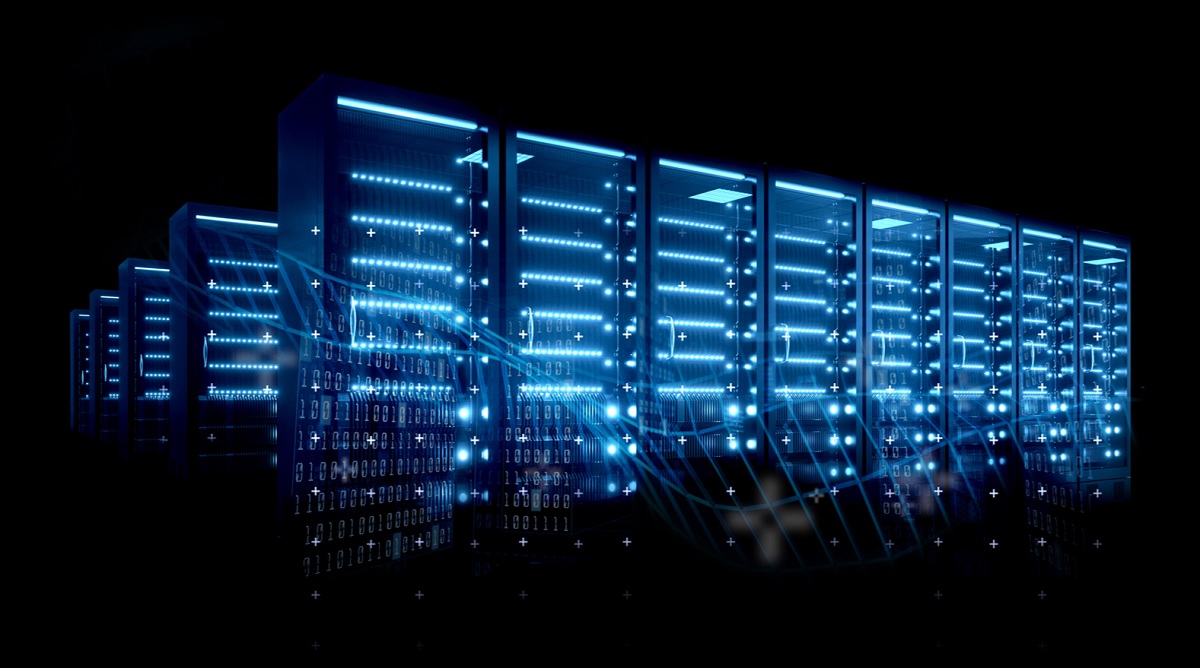
Above: Arm expects to manage a trillion devices in the Neoverse.
VentureBeat: What would you say affects more of your decisions about day-to-day investment, versus this 30-year investment?
Segars: Day-to-day investment is very much driven by, what do we need to have in our product portfolio so the compute platforms of these applications that are coming in front of us run on Arm? In that transition from a world driven by mobile to — we’re in a moment, in a world where the technology that’s come from mobile is being used in lots of other things. What are the next big drivers? The next big drivers are, thematically, 5G networks, AI, and autonomy. They all overlap. We’re investing in the compute platforms that will drive the growth in those areas, whether it’s data centers or autonomous cars or IOT devices. It’s about generating data. It’s about transporting data. It’s about processing data. Data is the driver behind the next generation of computing.
VentureBeat: Are there some things that capture your imagination here, that you’re very excited about? I see some progress with artificial limbs that’s exciting. It’s just cool to see.
Segars: It is. The exciting things are what people do with this technology. In my career, we’ve gone from technology being hard to use and expensive and evolving slowly. Now it’s much easier to use. Programming languages — I learned assembler 30 years ago. Now you can program in Python and express a neural net in one line of code. Productivity has increased enormously. Access to computing has come down in price enormously.
To me, the exciting thing is, what do you do with that? The barriers to innovation have gotten out of the way. It’s now about how quickly you can implement your idea. All the stuff that used to slow you down — you don’t have to build a factory anymore. You don’t have to build a server farm anymore. You can swipe your credit card and it’s all there for you. The exciting thing is what people do with all of that.


